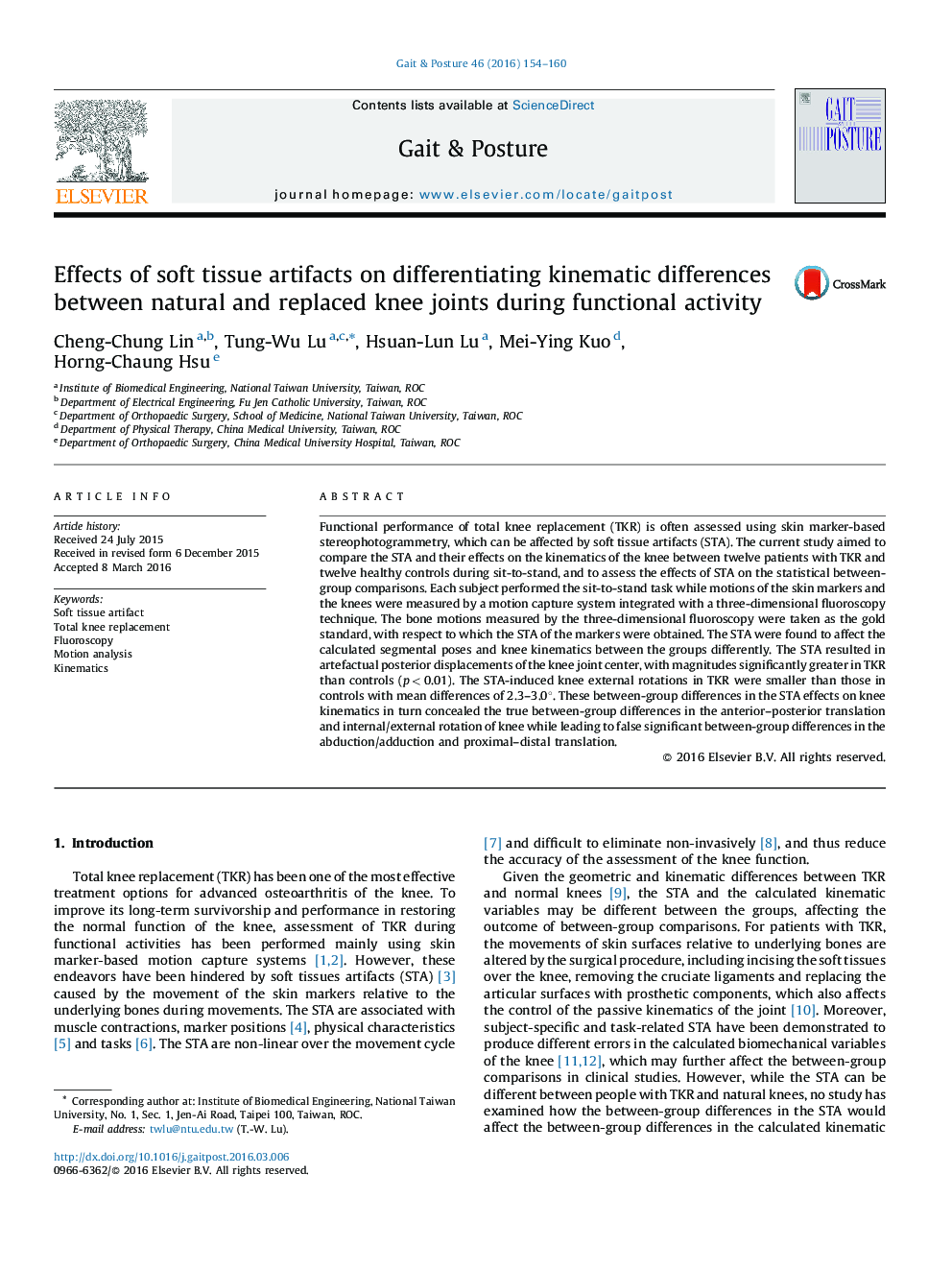| Article ID | Journal | Published Year | Pages | File Type |
|---|---|---|---|---|
| 6205815 | Gait & Posture | 2016 | 7 Pages |
â¢STA affects differently the calculated knee poses between healthy and TKR groups.â¢STA led to false between-group differences in knee Abd/Add and P/D translation.â¢STA concealed true between-group differences in knee AP translation and IR/ER.
Functional performance of total knee replacement (TKR) is often assessed using skin marker-based stereophotogrammetry, which can be affected by soft tissue artifacts (STA). The current study aimed to compare the STA and their effects on the kinematics of the knee between twelve patients with TKR and twelve healthy controls during sit-to-stand, and to assess the effects of STA on the statistical between-group comparisons. Each subject performed the sit-to-stand task while motions of the skin markers and the knees were measured by a motion capture system integrated with a three-dimensional fluoroscopy technique. The bone motions measured by the three-dimensional fluoroscopy were taken as the gold standard, with respect to which the STA of the markers were obtained. The STA were found to affect the calculated segmental poses and knee kinematics between the groups differently. The STA resulted in artefactual posterior displacements of the knee joint center, with magnitudes significantly greater in TKR than controls (p < 0.01). The STA-induced knee external rotations in TKR were smaller than those in controls with mean differences of 2.3-3.0°. These between-group differences in the STA effects on knee kinematics in turn concealed the true between-group differences in the anterior-posterior translation and internal/external rotation of knee while leading to false significant between-group differences in the abduction/adduction and proximal-distal translation.
